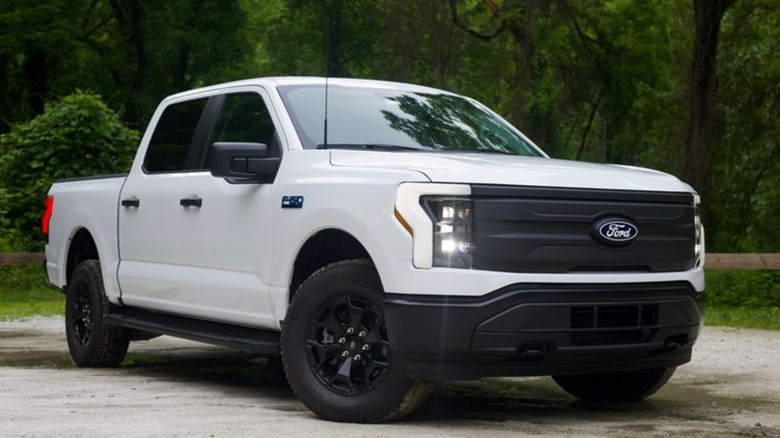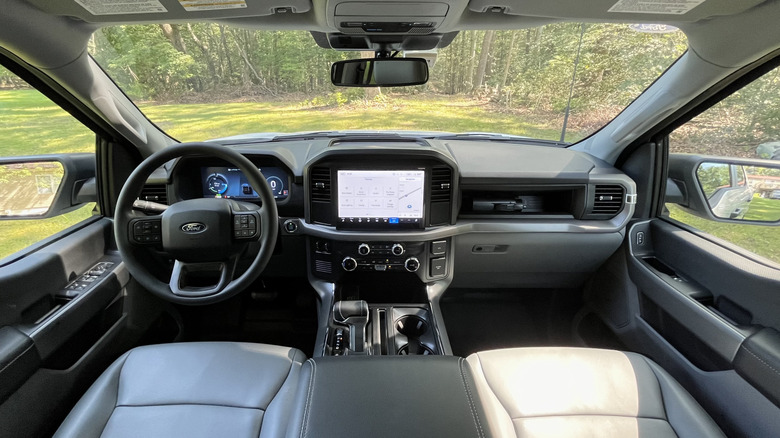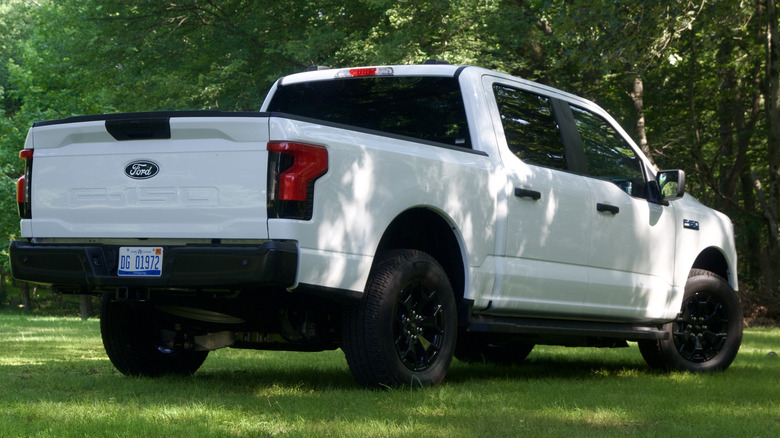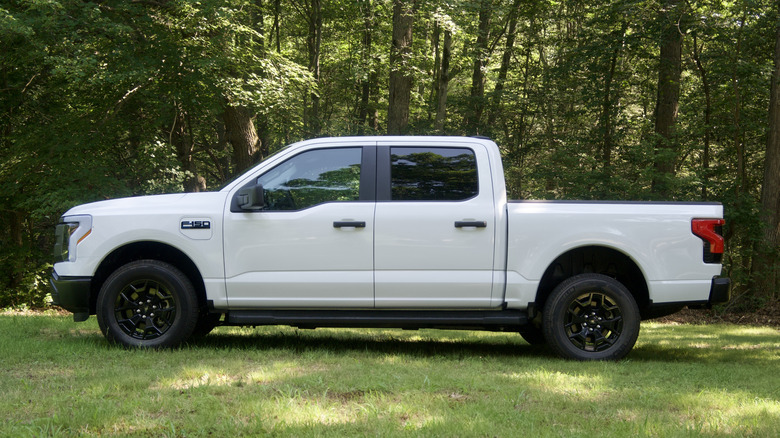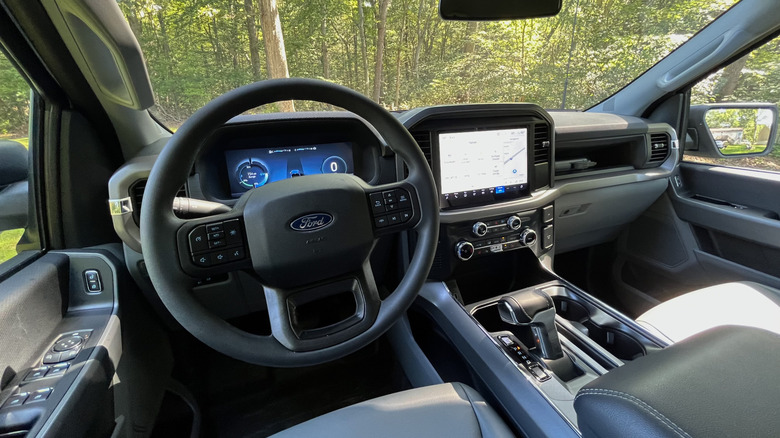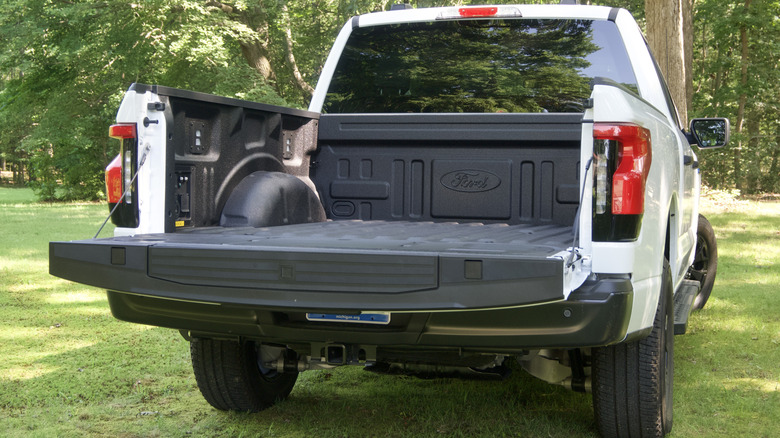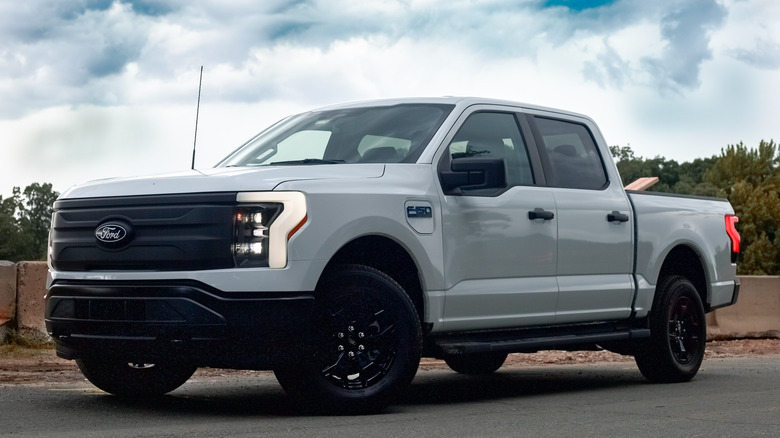2025 Ford F-150 Lightning Pro Review: Skip XLT And Spend On Range Instead
The Ford F-150 Lightning was a big deal when it was first released in 2022. It was billed as a real work truck that just happened to be electric, as opposed to pickups like the Rivian R1T where most of the focus on the truck itself is the fact it's electric. Other electric versions of American trucks, like the Chevy Silverado EV and GMC Sierra EV, bear a slight resemblance to their internal combustion counterparts, but those similarities are entirely superficial.
On the other side of the spectrum, monstrosities like the Tesla Cybertruck barely even look like a truck. From most angles, in contrast, the F-150 Lightning could be mistaken for any other regular F-150.
I grew up with Chevy trucks, so I don't have a lot of experience on the Ford side of the Force, but my family did briefly own a very tired 1990 F-150 with exactly no features in the cabin, so really anything that moves under its own power would be a positive. So, when I was offered an F-150 Lightning, I was eager to see what Ford has done to electrify the its pickup mainstay.
Utilitarian for a reason
The Lightning that arrived in my driveway was painted contractor white and fitted with vinyl seats that look like they were taken right out of the back of a police car. The only line items on the window sticker that could be considered "features" were dual-zone air conditioning and heated seats. Other than Apple CarPlay and Android Auto, the creature comforts are basically non-existent.
This wasn't a mistake at the factory and it's not a result of Ford dropping the ball in marketing the Lightning. This 2025 Ford F-150 Lightning is in the "PRO" series that's focused on fleet use or for trade/contracting work. As a result, you won't find it on Ford's regular website; pricing and configuration options are listed Ford's own Pro site.
It's bare bones for a reason. You don't want a bunch of features that clutter up the interior when you're on the job site. A premium sound-system doesn't help much when you need to hop in and sprint across the lot ensure that the concrete truck doesn't pour in the wrong place again.
Power where it's needed
Ignore the feature-lite nature of the interior, since the mechanical bits are where it shines the most. Under the familiar styling are two electric motors that generate a beefy 452 horsepower and a pretty astonishing 775 pound-feet of torque. I can neither confirm nor deny that I was able to chirp the tires taking off from a stop sign.
This Lightning was fitted with the 131 kilowatt-hour Extended Range battery that gave it a maximum range of 320 miles when all charged up (and up to 19.2 kW Level 2 charging support); commercial customers can have the Standard Range version's 98 kWh pack, rated for 240 miles, while the 123 kWh Extended Range battery that's standard on the retail Pro promises 300 miles (and has up to 11.5 kW Level 2 charging).
With the biggest pack I was able to get around 300 miles of driving, but it was also well over 90 degrees for most of the week, so that likely adversely impacted the range.
For truck people, this Pro was equipped with a Max Trailer Tow Package, which gives it a towing capacity of 7,700 pounds, over the 5,000 pounds of the base model. Lariat-trimmed Lightnings can tow up to 10,000 pounds. It's worth noting that the Rivian R1T can tow up to 11,000 pounds.
Ford's electric muscle truck
As for actually driving the Lightning, it was nothing short of a blast. I have the same entertainment sensibilities as a particularly clever ape, so a huge truck with almost 500 horsepower and instant torque is really fun to drive. It's a muscle car that can go to Home Depot. Everyone who says that electric cars are boring have never whipped around an empty parking lot in a Lightning in the rain. It's a lot of fun to drive, dispute its workman-like appearance. I had to run a few errands in downtown Baltimore and it never felt too unwieldy to drive, at least any more than a regular full-size truck. I was even able to parallel park it without much issue.
All versions of the Lightning have Pro Power Onboard, which makes sense as they're essentially a rolling battery. In the case of the Pro, the bed, cab, and frunk all feature 120V power outlets: a total of eight as standard, capable of 2.4 kW at 20 amps. A $1,200 upgrade to Pro Power Onboard 9.6 kW not only adds two further outlets, but one in the bed is 240V.
That's more than enough juice to run angle grinders, circular saws, and a lot of other job site hardware. Tools with needier power demands like welders would need more external power, but if you're a welder who is reading this and are in the market for an F-150 Lightning, you probably already know that.
Not a lot going on in the cabin
The interior is arguably where the Pro cost-savings are most obvious. Since it has vinyl seats, it got a little sticky-feeling when the temperature reached triple digits occasionally. It never felt stifling on the inside thanks to the freezing cold A/C that was always blasting, but it certainly wasn't ideal when you first get in the car after it's been sitting for a while. My first car was a 1985 Chrysler LeBaron convertible with fake-leather vinyl seats, and getting in the F-150 reminded me a lot of that experience. It's been a while since I sat in a car that had only plastic seats.
Still, if I was working in a more dirt or grime-centric career, I could see how the vinyl seats would be a lifesaver for keeping the truck clean. Just spray some Clorox, wipe it down, and you'll be fine. I don't think that's the truck's fault, then, it just has a very specific audience.
A cost-cutting EV
When ordered, this particular 2025 Ford F-150 Lightning Pro started at $47,780 for the 240 mile version intended for commercial customers. Add $6,500 more for the largest, 131 kWh battery; $1,200 for Pro Power Onboard 9.6 kW; $1,100 for the Max Trailer Tow package; $430 for a tailgate that folds down into a work surface and has an integrated step and fold out handle; and $595 for the spray-in bedliner.
A Ford-branded charging cord is $600, and a spare wheel (remember those?) is $175. Throw in a destination charge of $2,195 and you arrive at the final price of $60,575 for commercial buyers. Currently, the same truck starts at $49,780 before destination, and matching this configuration lands slightly higher overall, at $62,430.
Ford sells the Pro to retail customers, but not with the smallest battery. The cheapest retail version is $54,780 with the 128 kWh (300 mile) battery, $6,500 more for the largest battery with the fastest Level 2 charging. To match this overall spec, though, you're looking at about the same total price.
The least expensive Rivian might have a little bit more in the creature comforts department than the Lightning, but it also starts at $70,990 and it's pretty easy to inflate that price to six-figures with the right options. Other trucks, like the GMC Sierra EV, have no issue with high price tags either. The base-model Lightning also has the $55,000 commercial use Silverado EV beat on price, at least for non-retail buyers (though to be fair to the Silverado, it does have much more range).
2025 Ford F-150 Lightning Pro Verdict
If I had any qualms about the Lightning in this Pro form, I would say that the options list is a little incongruous. It has gloss-black wheels standard, when steel wheels (or at least wheels that look like steel wheels) would fit the work vibe a little bit better. It also could have benefitted from a bench seat in the front.
The 12-inch infotainment screen feels incongruous with the rest of the barebones interior. I also think Ford should extend the cost saving options like vinyl seats/floor to the "civilian" F-150 Lightning lineup, which has a base price of $63,345 for the XLT with the smallest, 98 kWh battery.
The 2025 Ford F-150 really is not only a great EV — maybe one of my favorites this year — but it's a great truck in general. It's fun to drive, the interior is as functional as it needs to be, and it has power where it counts. What's not to like?
